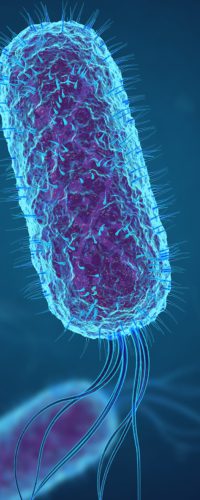UV GERMICIDAL IRRADIATION
UV kills cells as a result of accumulated DNA/RNA damage. Within a cell, the p53 gene produces proteins that slow the cell cycle and check for damage. If there is fixable damage, the p53 gene sends in proteins to repair the cell. If the damage is too extensive, the gene directs the cell to apoptosis, or programmed cell death. UV-C Light has a wavelength that ranges from 200 to 280 nm, and its maximum germicidal effect range is between 260 and 265 nm. Mercury vapor lamps emit more than 90% of their radiation at 253.7 nm, which is close to the maximum microbicidal range.
A COMPREHENSIVE OVERVIEW
UV-C light has some limitations when it comes to shadows and distances. The UVD Robot, however, distributes UV-C light evenly in its environment, in an effective whole-room capacity. With the UVD Robots Fleet Administration system, you get a live overview of your fleet of UVD Robots. You can access all aspects of your disinection history: which rooms were disinfected; how well were they disinfected, and much more. You also have access to detailed disinfection reports, including UV-C exposure maps of the disinfected areas, all of which can be exported into PDF format.
*Adapted from Hota B, Et. Al. Clin Infect Dis 2004;39:1182-9 and Kramer A, et al. BMC Infectious Diseases 2006;6:130.
Survival time is very dependent on the oxygen available and other factors in the reservoir where the microorganisms grow.







 Connectivity
Connectivity Tablet movement
Tablet movement Heat sensor activation
Heat sensor activation Walk sensor activation
Walk sensor activation
